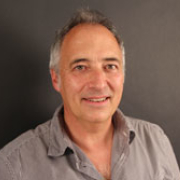Keynote Speaker

Prof. Laurent CHARLET
Institute of Earth Science (ISTerre-OSUG UMR 5275)University Grenoble Alpes
France
Speech Title: On−Off Mobilization of contaminants in phosphogypsum waste during redox oscillations, and contaminant removal using steel industry magnetite by-product
Abstract: The phosphate fertilizer industry is responsible for the stack-piling of Highly-polluted and acidic phosphogypsum (PG) wastes all over the Mediterranean shore (Lebanon, Cyprus, Spain) and elsewhere. They are usually exposed to weathering conditions and contain high amounts of heavy metals, metalloids and radionuclides (Zn, Cd, Pb, Cr, Ni, As, Sb and U). In the present study, we focus on PG wastes disposed directly on the salt marsh soil of the Tinto River estuary (Huelva, Spain). In such estuarine systems, variable redox conditions imposed by tide cycles may lead to sulfide precipitation and thus, to natural attenuation of the contaminants. The behavior of these contaminants was evaluated on the PG and the marsh basement , separately, using reactors with controlled experimentally-induced oscillating redox conditions. Chemically induced cycles of oxidation and reduction were achieved via a combination of gas (N2:CO2 vs compressed air) and carbon (ethanol) addition, to stimulate the metabolism of a natively present microbial community. The results revealed that Fe, and to a lesser extent S, control most precipitation/dissolution processes. Ferric iron precipitates in the form of phosphates and oxyhydroxides, while metal sulfide precipitation is insignificant and appears to be prevented by the abundant formation of Fe phosphates. An antagonistic evolution with changing redox conditions was observed for the remaining contaminants (i.e. Zn, As, Cd and U) which remained mobile in solution for most of the time during the experimental run while. similar experiments on phosphate poor subsurface materials have shown clear on−off switch mobility behavior for both major elements (i.e. carbon (C), iron (Fe) and manganese (Mn)), and contaminants. Manganese, Fe, and As were mobilized under anoxic conditions, whereas Sb, Se, and U were mobilized under oxic conditions. While As, Sb, and U were reversibly sorbed, Se and Cr were irreversibly sequestered via reductive precipitation. When present in aqueous solutions at high concentrations, CrVI prevented the reduction of Mn and Fe, and inhibited the mobilization of elements with lower EH°. Comparison of phosphate-poor and phosphate rich systems demonstrate that high concentrations of phosphates inhibit the typical processes of immobilization of pollutants in saltmarshes which highlights the elevated contaminant potential of phosphogypsum wastes on coastal environments. To improve remediation strategies for multiple contaminants in redox-dynamic environments, we propose a mixed kinetic-equilibrium biogeochemical model that can be forced by oscillating boundary conditions and that uses literature rates and constants to capture the key processes responsible for the mobilization of contaminants in soils. Since the most problematic contaminants are redox active (U, Cr, As, Sb, Se) we further investigated their removal via magnetite surface reductive immobilization. Two types of magnetite were compared: a pure lab made nanoparticulate magnetite, and a nano-magnetite produced by the startup Hymag’in using steel industry waste material. The approach demonstrates a possible industrial waste material virtuous life cycle.
Keywords: Phosphogypsum; estuarine salt-marshes; redox oscillations; nanomagnetite; contaminants’ retention
Biography: Laurent Charlet is Professor of Water Bio-Geochemistry and Nanotoxicology at the University of Grenoble, France. He earned his PhD at the University of California, Riverside (advisor: Prof. Sposito) and performed postdoctoral research in Switzerland at EAWAG (within Prof. Stumm group) and at the University of Bern (within Prof. Schindler group). He studies the fate of metalloids (As, Se, Sb..), organics (antibiotics, prions), radionuclides and nanoparticles in natural media and in the human body. He investigates the influence of bio-geo-chemical processes on the mobility, bioavailability, biotransformation and chemical speciation of these compounds in cells and natural waters under varying redox conditions, from the molecular scale to the field. His group maintains a modern trace element analysis, surface chemistry and cell culture laboratory and makes use in several project of synchrotron X-ray techniques (µXAS, µXRF), Neutron scattering and Mössbauer spectroscopy. Laurent Charlet is co-Editor-in-Chief of Journal of Hydrology, was elected member of CNRS national committee Section 30, and Head of the Environmental Toxicology Facility, Rovaltain, France International Scientific Committee.
